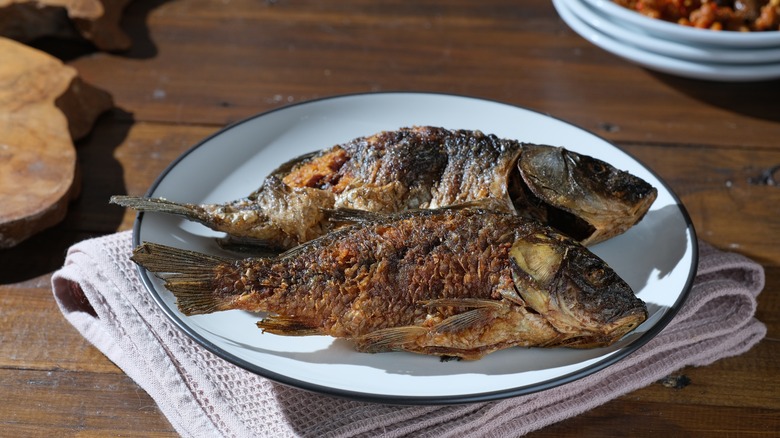Can A Name Change Make A Food More Appealing?
The Jamaican tangelo, most commonly known as the ugli fruit, got its name due to its wrinkly, unappealing, and genuinely "ugly" appearance (how imaginative). Those who've tried the fruit will argue that all you have to do is get past the ugly-looking appearance of this unique cross between a mandarin orange and a grapefruit to enjoy its sweet, tangy flavor. But what if we change its name to "beautiful" fruit instead? We bet it'd be good for a fruit that has been screaming into the void, "Don't judge a book by its cover!" Who knows, maybe it would even settle the debate that a name change can make a food more appealing to the masses.
From KFC changing its name to Uncle Ben's going for the more inclusive "Ben's Original", we've seen established brands change their names in the past for all sorts of reasons. And that's not it. Popular food brands have different names in other countries — Burger King is called Hungry Jack's in Australia, for instance. And when it comes to food, the name matters a lot. You may not be tempted to pay for "roasted carrots," but "honey glazed carrots" might grab your attention.
Enticing consumers with evocative food names could work with any food, really. Take this invasive fish species, for example, which was renamed to make it more appetizing. Interestingly, the primary reason behind renaming the fish was to mitigate the threat it poses to the Midwest underwater ecosystem.
Asian carp's new name is copi
The Illinois Department of Natural Resources has finally revealed the name for Asian carp in an attempt to draw more people to eat the fish species that is quickly taking over the river and lake habitats and destroying the natural ecosystem. Asian carp's rebranded name is copi (via Chicago Sun-Times). While the new name is one clever wordplay on the term "copious," which some may find over the top, it perfectly demonstrates the current situation of this invasive fish species responsible for about 70% of the biomass in the Illinois River (per Axios). Moreover, copi seems far more appealing and delicious on menus than Asian carp.
The four species of Asian carp (grass carp, bighead carp, silver carp, and black carp) didn't exist in the U.S. before the 1970s. They were introduced to serve a simple purpose: to control algae and parasite growth in farm ponds, aquatic farms, and sewage lagoons. Thanks to human mismanagement and floods, Asian carp escaped into the Mississippi River system and caused havoc in the underwater ecosystem. The breeding explosion of Asian carp is causing a fast decline in the population of native fish and valuable species like bluegill, yellow perch, and white and black crappie (via USA Today).
While Asian carp is a serious threat to the Great Lakes, it is safe to eat and considered a tasty fish. This surprisingly delicious fish is one of the 27 seafood items you need to try before you die.

